In this article, we will discuss the most important term-turn ratio of a transformer. You may find this term confusing if not understood conceptually.
You all know that the transformer functions on the principle of Faraday’s law of electromagnetic induction. When its primary receives AC supply, the primary generates magnetic flux that links to the primary and produces self-induced EMF. The flux also links to secondary and produces mutual induced EMF.
Thus the transformer has a certain relationship between the induced EMFs, the number of turns, and the currents. The transformer only transforms the voltage level, it neither alters the frequency nor changes the power. With this brief overview, now let us discuss the turn ratio of a transformer.
What is Turn Ratio of Transformer?
The ratio of primary turns (Np) to secondary turns(Ns) is known as the transformer turns ratio or TTR. It is denoted by the letter ‘a’.

The EMF equations of the primary and secondary induced EMF are;
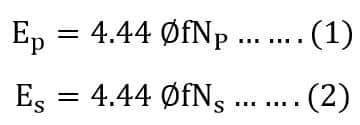
Dividing equation(1) with equation(2). we get
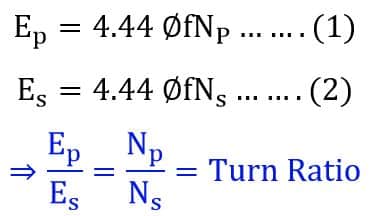
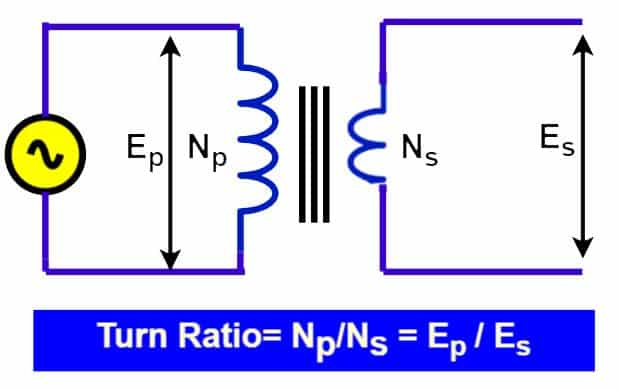
If we talk about an ideal transformer the EMF induced in the primary and secondary winding is equal to the applied voltage. It is because the loss component of current & magnetic flux is absent in it.
Therefore, we can write the expression for the applied voltage and the induced EMF as;

Therefore,

However, an ideal transformer is hypothetical and the realization of such a transformer is not possible.
From the above discussions, we can find out the turn ratio if the primary and secondary parameters, such as voltage and number of turns are known. Can we find out the turn ratio if primary and secondary current data is available? Definitely yes!! let us derive the expression for the turn ratio in this case.
As per the definition of the transformer, the transformer does not change the amount of power, it just transforms the voltage according to to turn ratio. In other words, we can say the secondary power output is equal to the primary power. At this point, you might think, how is it possible? Is this transformer lossless? definitely, you are thinking right. Actually, the input power is equal to the sum of the power losses and the secondary power. However, we are here considering an ideal transformer and the losses in the transformer-iron loss and copper loss- are zero.
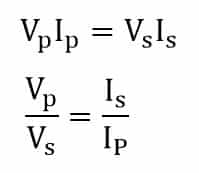
Formula of Turn Ratio

Note: For calculating the turn ratio of three phase transformer, take per phase number of turns, voltage, and current.
Turn Ratio of step-up and Step-down Transformer
The step-up transformer boosts the primary voltage and so we get the secondary voltage more than the primary. Contrary to this, the step-down transformer decreases the voltage, and we get a lower voltage at the secondary in comparison to the primary voltage.
We know that the magnitude of induced EMF in primary and secondary depends on the number of turns. The more the number of turns, the more the EMF. The below table shows the turn ratio of the step-up and step-down transformers.
| Transformer | Primary turns | Secondary turns | Turn Ratio(a) |
| Step-up | Less | More | Np/Ns<1 |
| Step-down | More | Less | Np/Ns>1 |
Turn Ratio of three phase Transformer
Delta- star Transformer
Delta-Side
Phase voltage = Line Voltage
Star-Side
Phase voltage = 1/√3 of Line Voltage
Thus, the turn ratio of the Delta-Star transformer is;
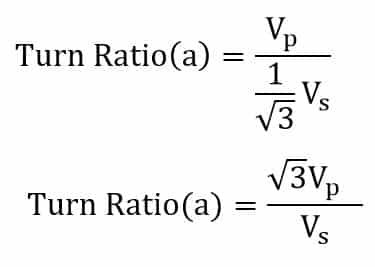
Here, Vp and Vs are the line voltage.
For example, if the primary and secondary line voltage of a delta star transformer is 6600 volts and 440 volts respectively. What is the turn ratio of transformer?

Star- Delta Transformer
Star-Side
Phase voltage = 1/√3 of Line Voltage
Delta-Side
Phase voltage = Line Voltage
Thus, the turn ratio of Star- Delta transformer is;
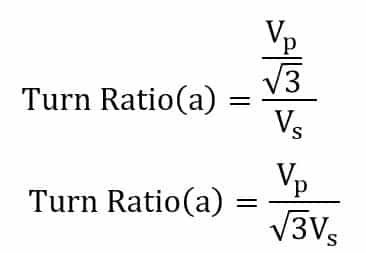
For example, if the primary and secondary line voltage of a Star delta transformer is 11000 volts and 6600 volts respectively. What is the turn ratio of transformer?
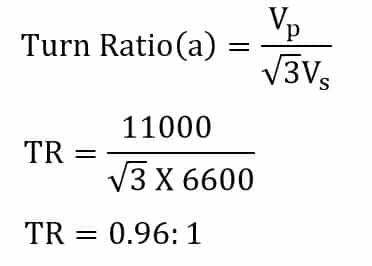
Relationship between Turn Ratio, Voltage Ratio, and Voltage Transformation Ratio
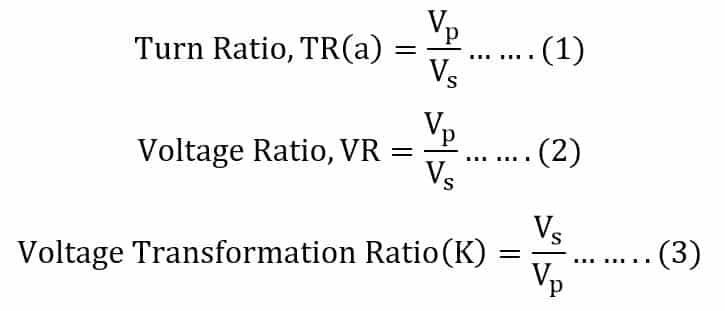
From the above equations, the relationship between turn ratio, voltage ratio, and voltage transformation ratio is;

Solved Problems on Turn Ratio
A transformer has 400 and 100 turns in its primary and secondary respectively. Find the turn ratio of the transformer.
Given data
Np = 400
Ns = 100
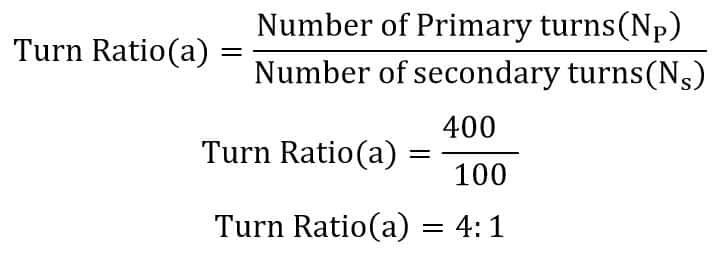
Turn Ratio = 4:1
When a transformer receives 440 volts at its primary winding, it induces 220 volts in its secondary. What is the turn ratio of transformer?
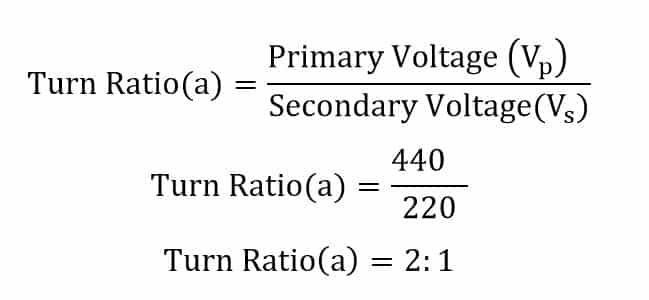
Turn Ratio = 2:1